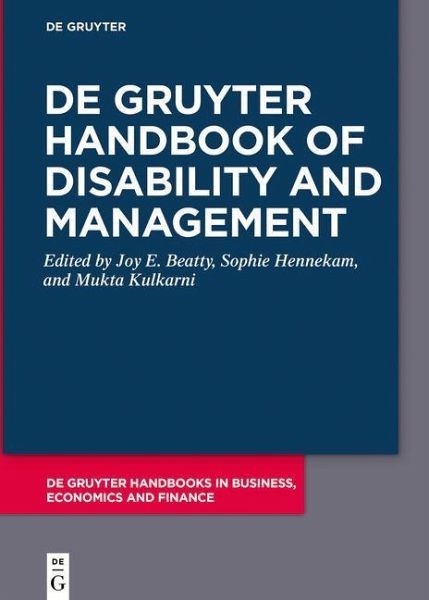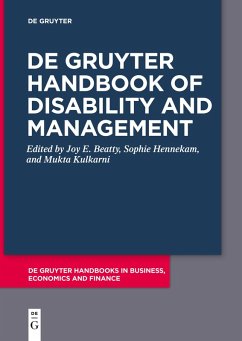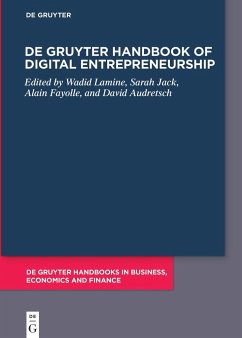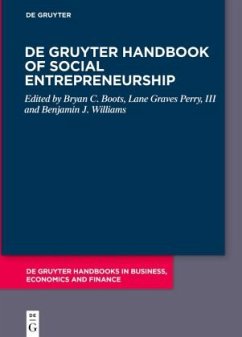Nicht lieferbar

De Gruyter Handbook of Disability and Management
Versandkostenfrei!
Nicht lieferbar
Globally, the prevalence of disability is growing, as is disability awareness. The disability rights movement argues that the right to employment is essential for full participation and human dignity. While there have been improvements related to broad diversity programs and policies, those for persons with disabilities, especially less visible or invisible disabilities, have received less attention.Contextual factors such as the legal environment and protections, cultural and social values, religious norms, and broader economic conditions shape the employment prospects for persons with disabi...
Globally, the prevalence of disability is growing, as is disability awareness. The disability rights movement argues that the right to employment is essential for full participation and human dignity. While there have been improvements related to broad diversity programs and policies, those for persons with disabilities, especially less visible or invisible disabilities, have received less attention.
Contextual factors such as the legal environment and protections, cultural and social values, religious norms, and broader economic conditions shape the employment prospects for persons with disabilities. The De Gruyter Handbook of Disability and Management uses an interdisciplinary lens to study disability and management, integrating perspectives from disability studies, psychology, education, and legal domains. It aims to incorporate a contextually sensitive and global perspective to emphasize actionable areas of inclusion and provides a more international focus by including contributions from across the world including contries and regions that have till date received less attention in the area of disability studies.
Managers, human resource professionals, and policy makers can be more proactive to support persons with disabilities, and more insights, best practices, and tools are needed to facilitate this support. This handbook will guide and support efforts of organizational stakeholders and policy makers as they strive to be more inclusive.
Contextual factors such as the legal environment and protections, cultural and social values, religious norms, and broader economic conditions shape the employment prospects for persons with disabilities. The De Gruyter Handbook of Disability and Management uses an interdisciplinary lens to study disability and management, integrating perspectives from disability studies, psychology, education, and legal domains. It aims to incorporate a contextually sensitive and global perspective to emphasize actionable areas of inclusion and provides a more international focus by including contributions from across the world including contries and regions that have till date received less attention in the area of disability studies.
Managers, human resource professionals, and policy makers can be more proactive to support persons with disabilities, and more insights, best practices, and tools are needed to facilitate this support. This handbook will guide and support efforts of organizational stakeholders and policy makers as they strive to be more inclusive.











